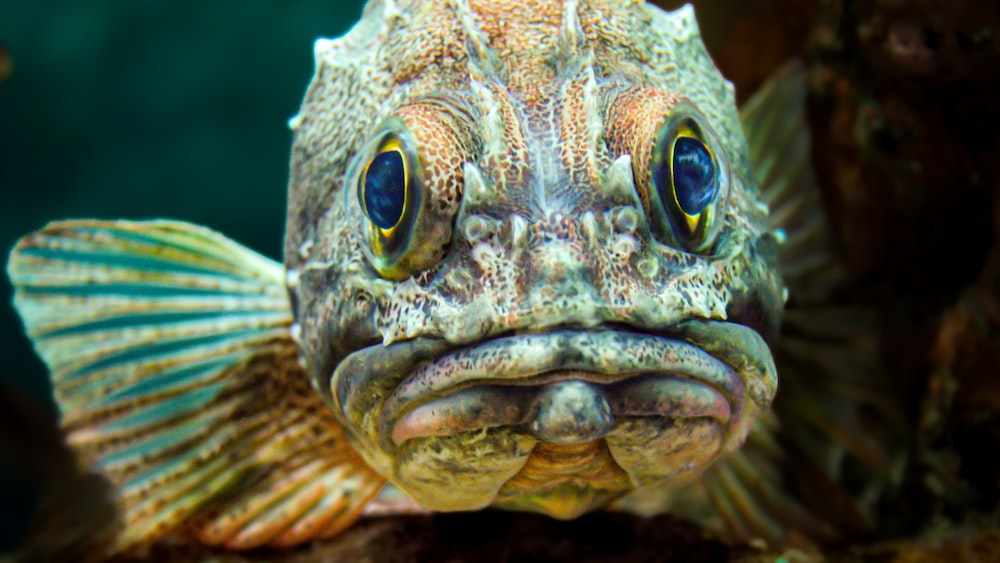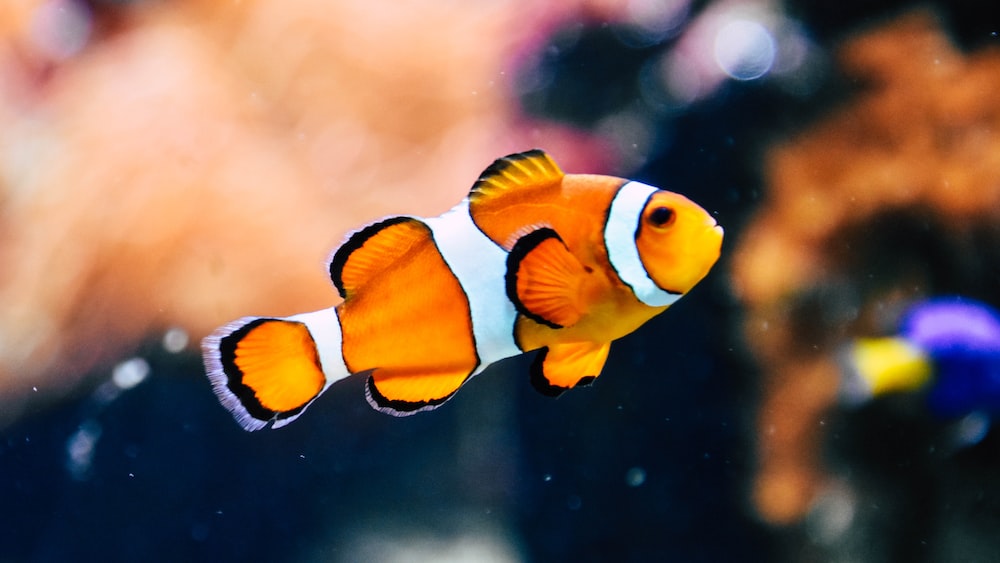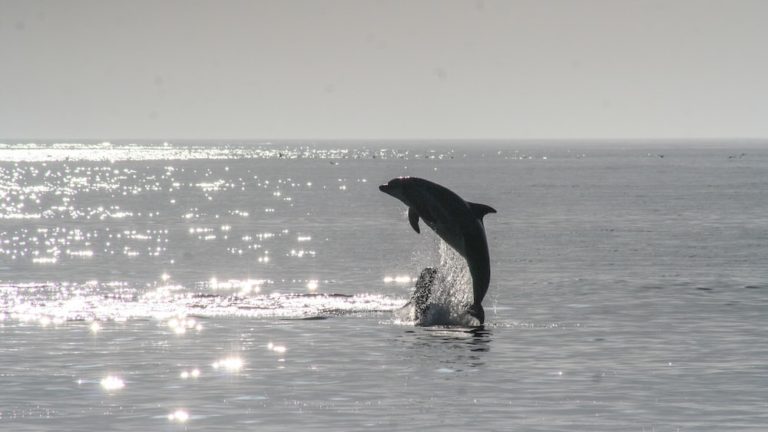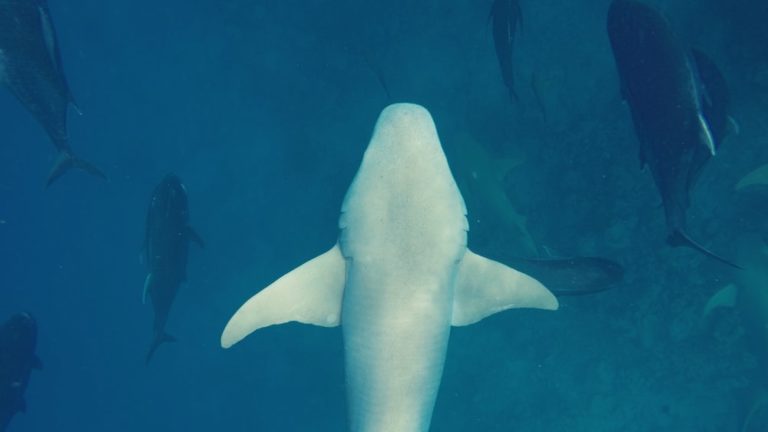50 All Different Types Of Fish List: A Comprehensive Guide
50 All Different Types Of Fish List: A Comprehensive Guide
As I wade through the shallows of this vast aquatic library, I am reminded that each species I encounter is a bound volume of ecological marvels. Marine life enthusiasts and conservationists alike, let’s embark on an underwater odyssey through the all different types of fish list; a compendium filled with finned wonders. Whether it’s in the glistening streams or the abyssal plains of the ocean, our finned friends exhibit a kaleidoscope of adaptations that are as fascinating as they are vital to their survival.
Eco-adventurers and conservationists, grasp your snorkels; we’re about to dive deep. In this comprehensive guide, we’ll navigate the swirling currents of fish diversity, from the pulsating heart of rivers to the saline solutions of our blue planet. Here, you’ll swim alongside familiar and exotic swimmers, learning how each species plays a crucial role in aquatic ballet. We’ll also cast a line into the topic of their conservation status, examining how habitat destruction and amphibian declines influence the intricate web of life beneath the waves.
So hold your breath, as we plunge into a realm where scales reflect the stories of evolution itself. Our journey will not just be one of exploration, but also introspection – as we investigate causes and decline, let us reflect on how we, as terrestrial animals, can effect positive change. This guide is a beacon for change, enlightening our responsibility to protect the diversity that thrives within each drop of water. Let’s set sail to discover that the real treasure lies not in mythical chests, but swimming all around us.
Exploring the Diversity of Fish Species
Beneath the surface lies a world teeming with variety, akin to a living, breathing mosaic – and our all different types of fish list is testament to that. It’s not just about numbers; it’s about the stories painted by nature’s own brush – stories of survival, of adaptation, and of the extraordinary. From sharks that command the depths with silent authority to tiny neon tetras that shimmer like living jewels, the diversity of fish species is an ensemble that performs an endless symphony in aquatic ecosystems.
Understanding Fish Classification
In the grand tapestry of marine biology, fish classification is akin to organizing a vast library where every book is unique. Ichthyologists, akin to librarians, catalog these creatures into groups that reflect their ancestry and physical traits. Bony fish, with their robust skeletons, compile the largest volume, while the cartilaginous shark clan lurks in their shadowy alcove. Understanding this system of classification is not just academic rigmarole but a way to unravel the evolutionary narratives and relationships among these aquatic denizens.
As we categorize fish from domain down to species, we uncover a world where history and biology intertwine like a DNA double helix. Fish classification can, at times, be as slippery as the subjects it seeks to sort, yet it remains a crucial tool, allowing us to communicate and understand the undercurrents of fish biodiversity. For example, knowing that lungfishes bridge the gap between aquatic and terrestrial life throws light on the transition from sea to land and perhaps, the amphibian declines we now witness.
Understanding fish classification is not just academic rigmarole but a way to unravel the evolutionary narratives and relationships among these aquatic denizens, allowing us to communicate and understand the undercurrents of fish biodiversity.
The Importance of Biodiversity in Aquatic Ecosystems
Why should we, devoted stewards of the earth, immerse ourselves in the subject of biodiversity? In every droplet of water, from puddle to ocean, biodiversity is the lifeguard ensuring balance and resilience. Aquatic ecosystems flourish thanks to this genetic and species variation, much like a well-rehearsed orchestra relies on the unique timbre of each instrument. It buffers against changes, be they natural or man-made, like a reef offering sanctuary against the tempests of life.
This diversity is our natural heritage, and yet it’s under siege. Habitat destruction, pollution, invasive species, and overfishing are just a few of the causes behind the alarming decline of so many fish species. As amphibians act as indicators of ecosystem health, so too do fish signal the vitality or vulnerability of their habitats. The ripple effect of losing a single species can be tsunami-like, washing away the intricate structures that house animals both great and small.
25 Popular Freshwater Fish Species
As we turn the pages of our all different types of fish list, a cluster of freshwater gems catches the light. These are the darlings of rivers, lakes, and streams; each species a chapter of adaptability and charm:
- Betta (Betta splendens) – The flamboyant fighters of aquatic arenas.
- Goldfish (Carassius auratus) – Pioneers of domesticated fish, twinkling like underwater stars.
- Guppy (Poecilia reticulata) – Dainty and diverse, the trendsetters of the fish world.
- Angelfish (Pterophyllum scalare) – Graceful and serene, the guardians of their leafy domains.
- Discus (Symphysodon spp.) – The kings and queens of the Amazon, adorned in vibrant regalia.
- Neon Tetra (Paracheirodon innesi) – Tiny sparks of life, adding splashes of color to the waterscape.
- Oscar (Astronotus ocellatus) – The gourmets of the tank, with a personality as big as their appetite.
- Plecostomus (Hypostomus plecostomus) – The armored janitors, tirelessly keeping surfaces algae-free.
- Siamese Algae Eater (Crossocheilus oblongus) – Slender and industrious, ever-vigilant against green invasions.
- Zebra Danio (Danio rerio) – Speedy and striped, the zebras of the waterways.
- Koi (Cyprinus rubrofuscus) – Swimming calligraphy, a traditional symbol of love and friendship.
- Cherry Barb (Puntius titteya) – A dash of fire in the foliage, shy yet spirited.
- Rainbowfish (Melanotaeniidae) – Nature’s own palette, painting the current with every hue.
- Arowana (Osteoglossidae) – The ancient gliders, rulers of their liquid kingdom.
- Flowerhorn Cichlid (Hybrid Cichlid) – The ornaments of the fish kingdom, crowned with nuchal humps.
- African Cichlid (Cichlidae) – A vibrant community, each species a jewel of evolution.
- Black Molly (Poecilia sphenops) – The tuxedo-clad partygoers of the freshwater realm.
- Swordtail (Xiphophorus hellerii) – With weapons as tails, they cut a fine figure through the greenery.
- Axolotl (Ambystoma mexicanum) – The perpetual larvae, guardians of regeneration secrets.
- Corydoras Catfish (Corydoras) – The armored squadrons, rummaging through substrate for treasure.
- Tiger Barb (Puntigrus tetrazona) – The vibrant aggressors, ever on the prowl.
- Bichir (Polypterus) – The relics of prehistory, slithering through timeworn channels.
- American Flagfish (Cyprindon floridae) – Patriotic and bold, keepers of the algae patrie.
- Elephant Nose Fish (Gnathonemus petersii) – Curious and mysterious, probing the soft beds with electrolocation.
- Harlequin Rasbora (Trigonostigma heteromorpha) – The dancers of the light, weaving through plants in tight formation.
In each capsule of freshwater life, we find astonishing adaptability and beauty. These 25 popular freshwater fish species each contribute to the richness and majesty of our planet’s veins and arteries, scenes from an ongoing masterpiece where every scale counts.
25 Popular Saltwater Fish Species

The ocean, with its boundless horizon and abyssal depths, is a vibrant orchestra of life. It tugs at the heartstrings of marine enthusiasts like a siren’s call. In this vast blue yonder, you’ll find a treasure trove of fish, each more mesmerizing than the last. The saltwater fish species are a testament to the kaleidoscope of life beneath the waves. They paint the ocean’s palette with their vivid hues and fascinating behaviors. Diving into our all different types of fish list, let’s explore the 25 popular saltwater fish that have captivated the hearts of aquarists and snorkelers alike.
- Clownfish – The vibrant jester of the sea, with stripes as iconic as their bond with sea anemones.
- Blue Tang – Sailing through the reef like a royal flag, their indigo shimmer is the envy of the ocean.
- Yellow Tang – Dazzling as a burst of sunlight, these tangs add a splash of color to the underwater cityscape.
- Lionfish – Striking in appearance, these venomous virtuosos of the sea wield plumes like a dandy’s quill.
- Moorish Idol – A fish that looks like it’s dressed for a masquerade, with bold markings to match its elegant finesse.
- Butterflyfish – With fluttering fins, they dance through the reefs, a delightful exhibit of marine grace.
- Angelfish – The seraphim of the seas, adorned with ethereal patterns that spellbind onlookers.
- Regal Tang – A nobility that glides among the corals, its palette a masterpiece of Picasso.
- Mandarinfish – Donning a robe of psychedelic swirls, these fish are the ocean’s own surreal artists.
- Great Barracuda – The seafaring sprinter, with a piercing gaze that patrols the seas with unrelenting focus.
- Mahi-Mahi – A dazzling performer, iridescent as it leaps in a display of aquatic acrobatics.
- Parrotfish – Gnawing at algae like an avian mimic, their vivid scales mirror a painter’s canvas.
- Flame Angelfish – A fiery spectacle, they flicker through the reefs like living embers.
- Naso Tang – Sporting a unicorn’s grace with a distinct snout, these tangs are indeed ocean oddities.
- Pufferfish – Inflating like a balloon, they are the quirky defense artists of the deep.
- Moray Eel – Lurking in crevices, they remind us that beauty often lies in the eye of the beholder.
- Banggai Cardinalfish – Stars of the night sea, their ornate bodies sparkle like celestial constellations.
- French Angelfish – Elegance defined, these fish swim with a romantic flair befitting their name.
- Royal Gramma – A fish cloaked in regal purples and golds, as if draped in royal velvets.
- Wrasse – A family of immeasurable diversity, each member flamboyant and uniquely its own.
- Grouper – The gentle giants of the reef, camouflaged yet conspicuous in stature.
- Surgeonfish – With legendary finesse and blade-like appendages, they carve their niche in the reef.
- Swordfish – Epic in scale, these ocean gladiators wield bills as mighty as their reputation.
- Snapper – Abundant in tropics, they stage a symphony of silvers and pinks amidst the ocean blues.
- Tarpon – Ancient and majestic, their silvery scales hold stories of oceans old and new.
Conservation Status of Fish Species
In the theatre of life below the waves, not all is at ease. The conservation status of marine species cannot be understated. With issues like overfishing and habitat degradation, the cast of characters that make up the ocean’s narrative face threats of extinction. The Endangered Species Act has been pivotal in flagging the risks, championing the need for protection and recovery of imperiled species. To ensure the longevity of all different types of fish list, we must recognize the precarious tightrope these wonderful animal species tread upon – balancing between the vibrant aquatic plant life and the abyss of extinction.
Threatened and Endangered Fish
Venturing deeper into murky waters, let us confront the grim reality facing our finned friends. Threatened and endangered fish are an alarming testament to our ocean’s fragility. Many species, such as the vaunted Bluefin Tuna or the majestic Goliath Grouper, are on the brink, swimming perilously close to extinction. Endangered species are not merely data points; they are vital threads in the tapestry of marine ecosystems. The Endangered Species Act serves as a beacon of hope, a rallying call to protect these critters of the deep. They are emissaries of the ocean’s health, and their decline signals a dire need for conservation action.
The tale of the totoaba, for instance, is a sobering chapter in this ongoing saga. Coveted for its swim bladder, the totoaba finds itself ensnared in the clutches of the illegal wildlife trade. Meanwhile, the sawfish, with its rostrum reminiscent of a swordsman’s blade, faces a future clouded by the shadow of extinction. Threatened species like these are the canaries in the coal mine for oceanic health, and their plight should ignite a fervor within us all to champion the preservation of our underwater realms.
In my personal dives into the world’s coral cathedrals, I have been greeted by the somber sight of bleached skeletons where vibrant ecosystems once thrived – a haunting allegory for the fate that awaits many fish species. As we float in the wake of disappearing diversity, it is incumbent upon us to ensure that these sentinels of the sea do not fade into silent extinction, but instead continue to thrive, alongside the lush marine plant life that adorns their underwater world.
Sustainable Fishing and Consumption
Embark with me, fellow eco-adventurers, on an exploration of one of the most pressing matters of our times: sustainable fishing and consumption. To avid seafood consumers and those casting lines for leisure, the provenance of their marine bounty is a crucial node in the web of conservation. We all must scrutinize our seafood sources, favoring practices that do not plunder but rather perpetuate the ocean’s bounty.
Sustainable fishing is not a mere catchphrase; it is a lifeline for fish species worldwide. It evokes fishing methodologies that minimize bycatch, respect spawning seasons, and support the rejuvenation of fish stocks. By standing behind such practices and partaking only in sustainably harvested seafood, we safeguard marine life and affirm our solidarity with the ocean’s fragile ecosystems.
In the grandiose buffet of sea creatures, every decision at the fish market or restaurant reverberates through underwater corridors. I’ve seen first-hand how local fishing communities align with the rhythms of the sea, choosing poles over trawls, and selective gear over indiscriminate nets. This alliance between human and habitat is a chorus of conservation, a melodic pact that promises the renewal rather than the depletion of the ocean’s living splendors. We, as conscious consumers, must be stewards of the sea, opting for paths that nourish rather than negate the rich tapestry woven by all different types of fish list.
FAQs
1. What are the key differences between freshwater and saltwater fish?
The key differences between freshwater and saltwater fish involve adaptations to their distinct environments. Freshwater fish, often thriving in rivers and lakes, have kidneys that efficiently expel large amounts of water while retaining salts. In contrast, saltwater fish found in the ocean possess gills that actively excrete salt and kidneys that conserve water, due to the salty environment they inhabit. Moreover, the body shape and swimming strategies often vary, with some species equipped for the fast-moving currents while others for the vast expanses of the sea.
2. How can I identify endangered fish species?
Identifying endangered fish species is vital for conservation efforts. One way to recognize these creatures is through conservation status lists, such as the IUCN Red List, which classifies species based on their threat level. Additionally, there may be local resources in specific regions, like Nebraska‘s natural heritage program, providing information about endangered organisms within state waters. Anglers and enthusiasts can also play a role by learning about at-risk species and reporting sightings to conservation authorities.
3. What are some tips for sustainable fish consumption?
Tips for sustainable fish consumption include choosing species that are abundantly available and harvested through eco-friendly practices. Eating fish that are lower on the food chain, such as sardines and herring, can reduce ecological impact since these organisms reproduce quickly and in large numbers. Another tip is to refer to seafood guides that highlight sustainable options and to support labels that certify sustainable fishing efforts. Mindful choices help maintain biodiversity and the health of aquatic systems.
4. How does biodiversity affect the health of aquatic ecosystems?
Biodiversity directly influences the health of aquatic ecosystems. A rich tapestry of species, from microscopic plankton to the majestic whale, creates a balanced environment where organisms fulfill crucial roles. This variety ensures resilience against disturbances and supports vital functions such as nutrient cycling and habitat structure. Just as each thread in a net is critical to its strength and functionality, each species in an ecosystem contributes to its overall vitality and sustainability.
Conclusion
With every dip below the watery horizon, I am irresistibly drawn into a world brimming with such dynamism that cataloging all different types of fish feels like an ever-evolving mosaic. It’s the ultimate scavenger hunt for the curious conservationist! This all different types of fish list not only serves as an encyclopedic trove for the avid angler and marine life enthusiast, but also as a beacon, guiding our collective efforts in preserving each unique swimmer of the deep.
As we delve into the watery wilds, be it the cascading streams or the unfathomable oceanic trenches, we are reminded time and time again of the critical interplay between the inhabitants of these realms. The diverse fish list is much more than a catalog; it’s a testament to the intricate web of life that sustains us all.
May this guide inspire you to become stewards of the aquatic world, celebrating not just the all different types of fish list, but the very essence of life beneath the waves. And in that spirit of discovery and custodianship, may our net of knowledge cast ever wider, bringing each of us closer to the heart of the ocean’s mysteries. Until our next undercurrent adventure, keep making ripples with your actions and stay immersed in the tide of awareness. Farewell, my fellow bluehearted companions, and remember: every small current creates a wave.
Warmly, Jasper Flynn







